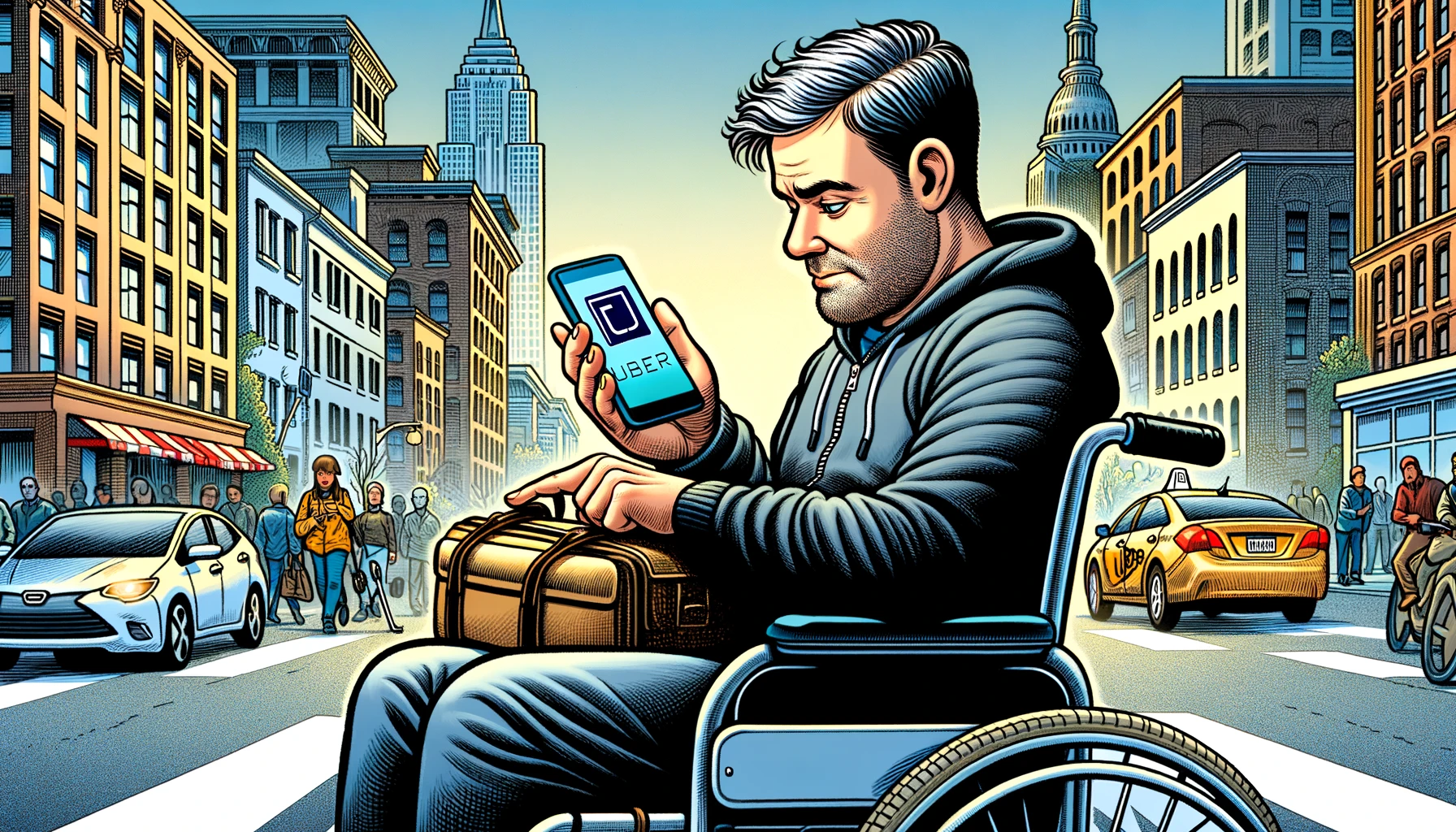Mahtot Gebresselassie, York University, Canada
For wheelchair users, travelling by using ride-hailing apps, like Uber and Lyft, can be complicated. On March 20, a class action was announced against Uber and Lyft in British Columbia for allegedly not providing service to a wheelchair user. One of the goals of the class action is to bring about systemic change to the companies’ practices.
In the United States — where my research into ride hailing apps took place — lawsuits by wheelchair users or disability organizations against the companies are all too familiar. Sometimes, the outcomes of the suits resulted in payments to riders who were not provided service due to their use of wheelchair.
Other times, the rulings attempted to bring systemic changes. In a case that involved wheelchair users in Jackson, Miss. and New Orleans, La., the ruling was in favour of the companies.
The class action in B.C. draws attention to issues of accessibility in the transportation service hailed via Uber and Lyft for people with disabilities, in particular wheelchair users.
Usable transportation
Accessibility issues related to wheelchair use are not about whether the apps are usable. They are also not about whether the apps provide information on accessible routes. Rather, they are about whether the actual transportation service hailed through them is usable.
Between 2020 and 2021, I conducted a U.S.-wide survey, where I found that some wheelchair users were satisfied with the service, while others were not. Those who were satisfied cited the ability to see the cost of the ride up front, the door-to-door service and convenience. Others reported experiencing various challenges, including the lack of wheelchair-accessible vehicles (WAVs), being declined service by drivers and long wait times.
My study revealed that several factors were associated with the ability to use Uber and Lyft successfully.
Wheelchairs and vehicles
The type of wheelchair a rider uses affects access. Riders with foldable wheelchairs have better odds of using these services successfully because the wheelchair can be folded and stowed in most vehicles.
The majority of the survey respondents who reported they were not Uber and Lyft customers used fixed-frame wheelchairs.
Riders who need to remain seated in a wheelchair during travel or use fixed-frame wheelchairs have lower odds of success using the services. They can only travel in WAVs, which are not as commonly available on the apps as four-door sedans used for basic level service. For riders who need WAVs, this can mean long wait times – on average twice more than the wait time for basic service, as I found in my study. It can also mean no service at all. https://www.youtube.com/embed/pLfPul-UKjw?wmode=transparent&start=0 Passengers using wheelchairs experience long wait times for accessible vehicles.
While travellers who use foldable wheelchairs have better odds of obtaining a vehicle that can fit their wheelchair through basic service options, they experience a different kind of challenge. Some of the respondents who used a manual wheelchair reported experiencing withdrawn services — when the driver declines to take the ride. Other studies report similar experiences.
The class action in B.C. is based on the complainant’s experience related to shortage or unavailability of WAVs for those with fixed-frame wheelchairs or who need to remain seated during travel.
Unavailabilities and shortages
Previously, the companies’ responses to allegations of discrimination against wheelchair users in the U.S. have been that they are technology companies — rather than transportation companies — that connect riders and drivers.
Uber used the same argument in a recent case that was brought to the B.C. Human Rights Tribunal.
This configuration means that they do not own a fleet of vehicles but rely on cars that drivers bring. As such, they are not obligated to provide WAVs. In Washington, D.C., for instance, taxi companies that own at least 20 vehicles are required that a percentage of their fleet consist of WAVs. There is no equivalent requirement for Uber and Lyft.
The companies have provided WAV ride options on their apps in select cities primarily by forming partnerships with third-party transportation companies. UberWAV began in 2018 and Lyft Access in 2019 in Toronto, Washington, D.C., the San Francisco Bay Area and other larger markets.
These services are not available in many other cities, and wheelchair users seeking WAV rides are directed to either local taxis or paratransit services offered by transit agencies or municipal governments.
However, directing wheelchair users to other services by providing a list of accessible options is not considered equivalent to the service the companies offer to non-disabled travellers.
Supply and regulations
The companies say that in the cities where they do not operate WAV services, there is not enough supply of WAVs. Disability advocates disagree, saying that the lack of WAV services has to do with the lack of disability regulations in those areas.
In markets where Uber and Lyft have WAV service options on their apps, there is a shortage of WAVs. For drivers, there is little financial incentive in purchasing these vehicles to work on the Uber and Lyft apps. The vehicles are more expensive to purchase, insure, run and maintain than cars used for basic service level.
Individuals who have access to WAVs for personal or family use may not sign up to drive on the apps. Accessibility modifications to WAVs are unique to the user and may not be suitable for all.
People with disabilities travel in personal cars as passengers. As I found in my study, many wheelchair users do not drive or own a driver’s licence due to their disability. Someone who is responsible for transporting a family member with disability may not have the availability to drive for a ride hailing service.
Wheelchair users who drive WAVs may not be able to assist a passenger in a wheelchair during vehicle entry and exit and securing wheelchair restraint inside the vehicle.
At the root of the WAV service wars is the companies’ platform business model as technology companies connecting service seekers and providers. This three-party configuration — composed of users, providers and platforms — has been an obstacle to regulate these companies in general. Any systemic improvement will need to address that.
Providing accessible services
While an overhaul of the existing configuration may not be possible in the short term, changes to the companies’ business model or current disability accommodation practices or lack thereof maybe inevitable.
The lawsuits in the U.S. and Canada demonstrate that people with disabilities will continue to ask for services that meet their needs. My research shows that even wheelchair users who are currently unable to use Uber and Lyft see promise in a convenient, on-demand transportation service hailed through the apps.
The companies can meet them halfway. Or the courts might bring them there — eventually.
Mahtot Gebresselassie, Assistant Professor, Environmental and Urban Change, York University, Canada. This article is republished from The Conversation under a Creative Commons license. Read the original article.





